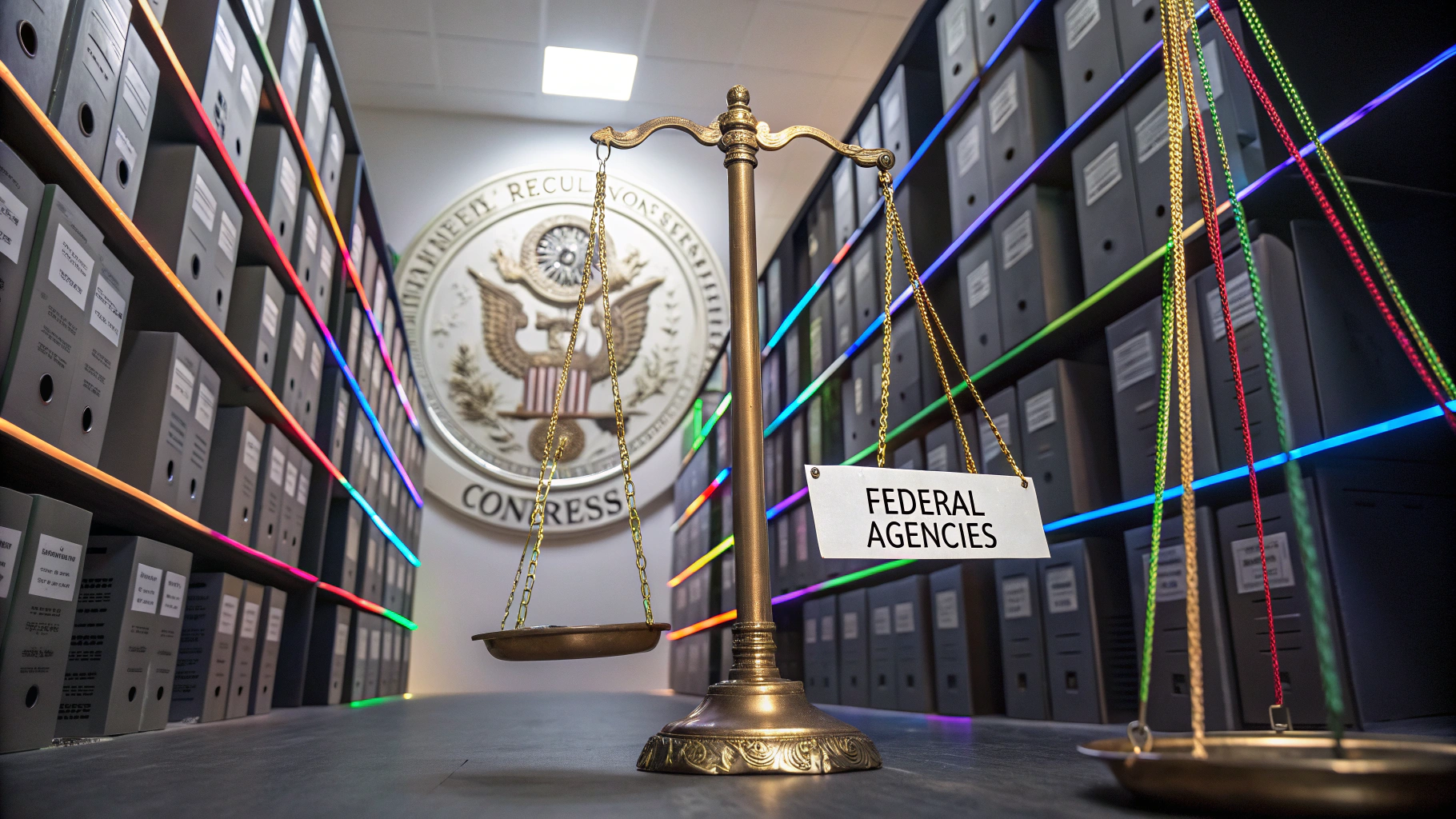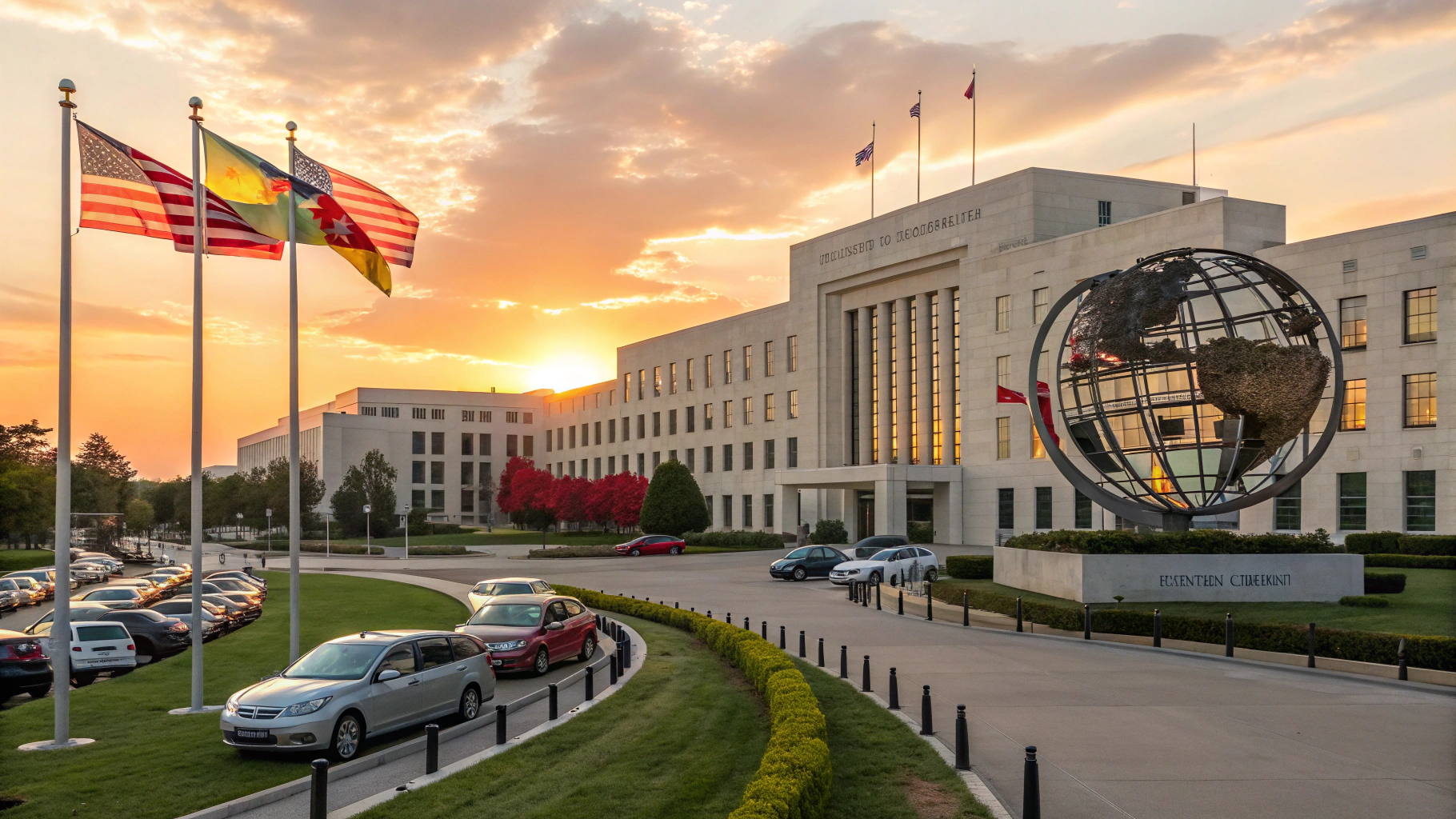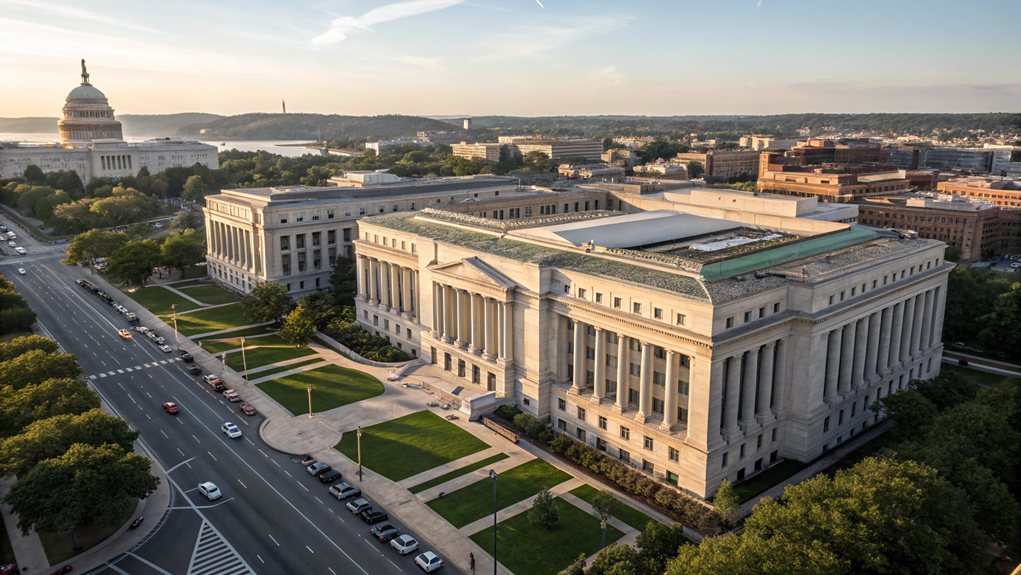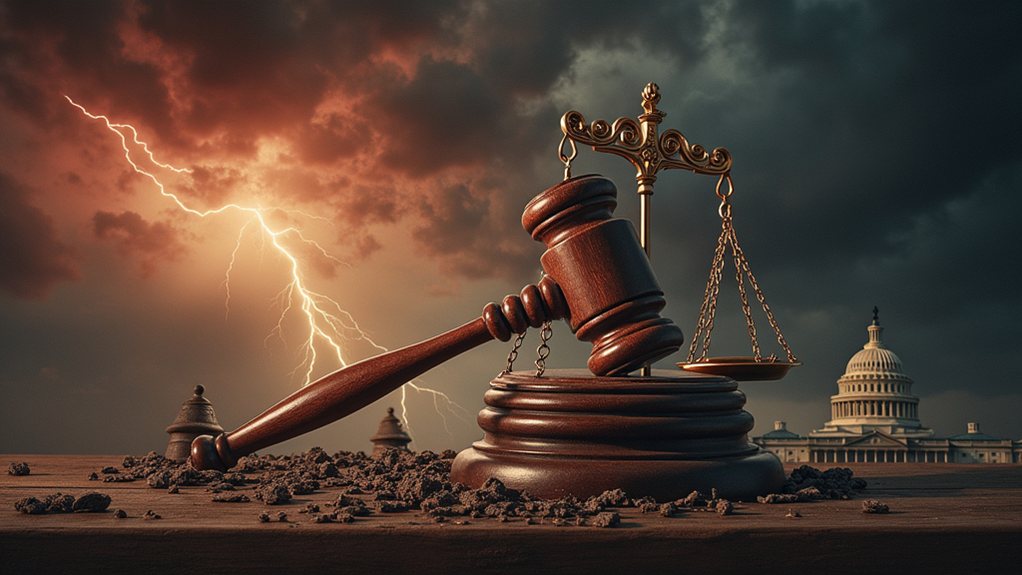Federal agencies create and enforce regulations through a process that's anything but simple. Congress gives them the go-ahead with laws, like the FDA's power from the Food, Drug, and Cosmetics Act. Then, agencies draft rules, publish them in the Federal Register, and actually ask the public for feedback—that's right, they want to hear from you! After considering every comment, they finalize regulations. But wait, there's more to this convoluted dance of bureaucracy. Want to know the rest?
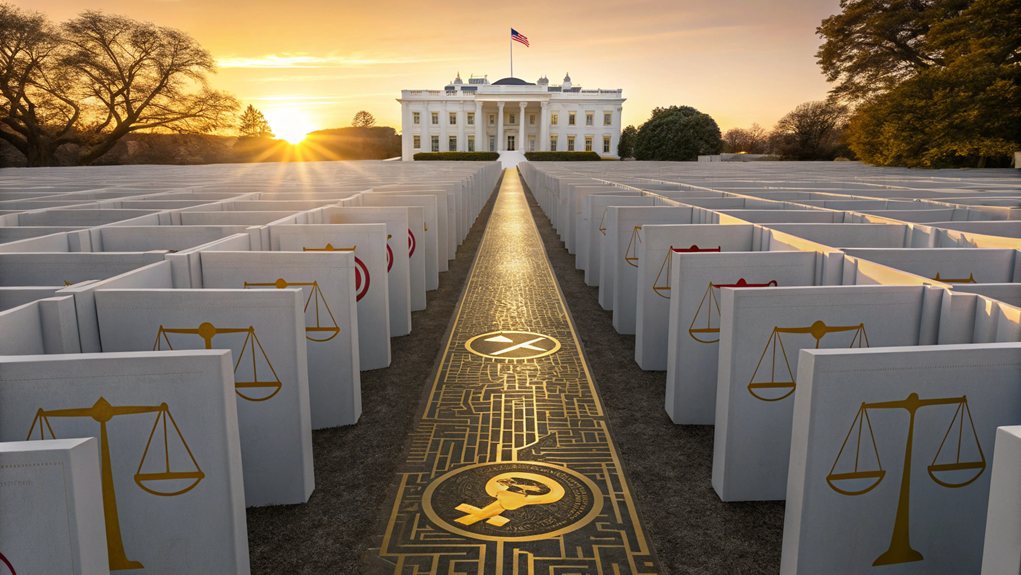
When it comes to creating regulations, federal agencies operate in a world that's anything but simple. They don't just wake up one day and decide to impose rules. No, there's a whole bureaucratic ballet involved. It starts with Congress, which hands over statutory authority through enabling legislation. Think of it as Congress saying, "Hey, FDA, here's the Food, Drug, and Cosmetics Act. Go make regulations!" And surprise, surprise, these regulations have the same legal punch as laws passed by Congress itself.
Creating federal regulations is a complex dance between Congress and agencies, where laws gain legal weight through enabling legislation.
But hold your horses! Congress doesn't just abdicate all responsibility. They can modify or even repeal those regulations whenever they feel like it. That's right—nothing's set in stone. Agencies like the FDA and FTC are tasked with the nitty-gritty of implementing these laws, and let's face it, they have their hands full. The federal budget process can also play a significant role in how agencies prioritize their regulatory agenda.
Now, how does this process unfold? Enter the Administrative Procedure Act (APA), which lays down the rules for rulemaking. Agencies must publish proposed rules in the Federal Register. Then, the public gets a chance to comment. Yes, folks, public participation is a thing! People can voice their opinions, and this feedback can sway the final product. This is crucial because the Federal Register serves as the official record of federal rulemaking, where all new regulations are first published. Additionally, agencies must provide a meaningful opportunity for public comment on NPRM content, as required by the APA.
After all that back and forth, the final rules get published, and voilà, they're now in effect.
And don't forget about the bureaucratic labyrinth of the Code of Federal Regulations (CFR). This is where permanent regulations live, updated annually. It's like a giant filing cabinet for all the rules.
But then there's the President. With executive orders and oversight from the Office of Management and Budget, the President can pull the strings. Cost-benefit analysis? Mandatory for significant rules. It's all about making sure the benefits outweigh the costs—because who wants to waste money?
And just when you think it's smooth sailing, Congress can still throw a wrench in the works through the Congressional Review Act. Regulations can be challenged in court, too. It's a wild ride, folks!
Frequently Asked Questions
What Is the Difference Between Regulations and Laws?
Regulations and laws. They're like cousins at a family reunion. Laws are the big deals—crafted by Congress, full of pomp and circumstance.
Regulations? They're the nitty-gritty details, created by federal agencies under the umbrella of those laws.
Think of regulations as the instruction manual for the laws. Both pack a legal punch, but regulations get into the weeds.
Laws set the stage; regulations write the script. Simple, right?
How Can the Public Influence Regulatory Decisions?
The public can shake things up in regulatory decisions, and it's not just by complaining on social media.
They submit comments during the notice-and-comment process, attend public hearings, and access regulatory info. This isn't just busywork; it's about making sure decisions reflect real-life values.
Sure, there are challenges—like complicated issues and resource gaps—but when people engage, regulations can actually get better.
Who knew civic duty could be this impactful?
What Happens if Agencies Violate Their Own Regulations?
When agencies violate their own rules, chaos can ensue. Courts can swoop in, tossing regulations like yesterday's leftovers.
Public trust? Yeah, that plummets faster than a lead balloon. More lawsuits? Absolutely—because who doesn't love a good courtroom drama?
Reputation takes a hit, and Congress might step in, just for fun. It's a wild ride, really.
One misstep, and suddenly, everyone's questioning what the agency even stands for. Welcome to the regulatory circus.
Are There Limits to Federal Agency Regulatory Power?
Yes, there are limits to federal agency regulatory power. Courts can step in and say, "Not so fast!" if regulations overreach.
Congress can also intervene, keeping agencies in check. Plus, with the end of *Chevron* deference, judges aren't just rubber-stamping agency decisions anymore.
It's a game of tug-of-war, really. Agencies might find themselves scrambling to adapt, while the public gets a front-row seat to the chaos.
Who doesn't love a good showdown?
How Do Regulations Impact Small Businesses Differently?
Regulations hit small businesses harder than a bad haircut. They face costs that larger firms can shrug off.
Compliance? It's a nightmare, often fixed and suffocating. Small businesses can't spread those costs over massive revenues.
And don't get started on complexity—it's like deciphering ancient hieroglyphs.
Growth? Forget it. Some rules practically scream, "Stay small, stay safe!"
With less clout than corporate giants, small businesses often feel like the underdogs in a rigged game.
